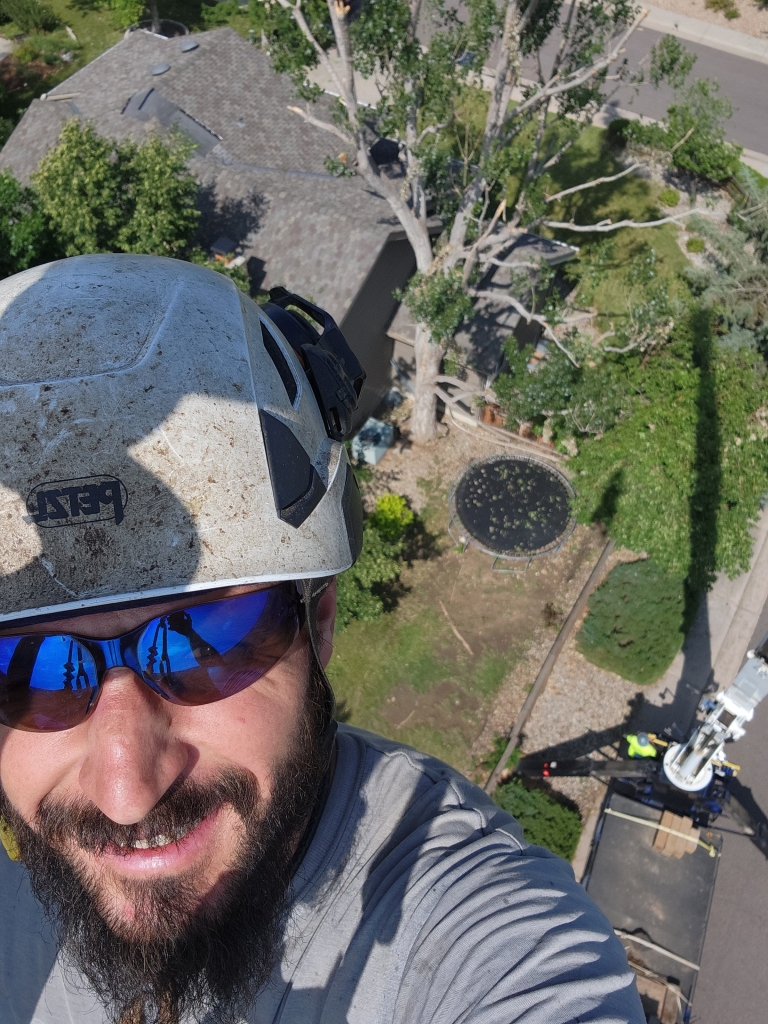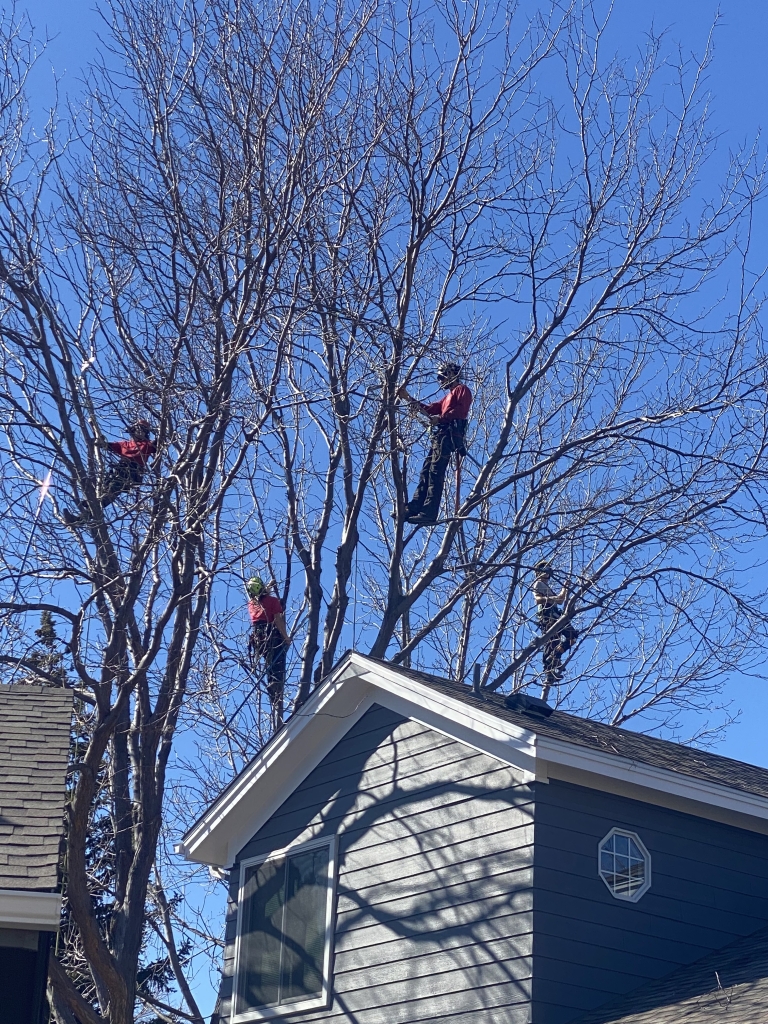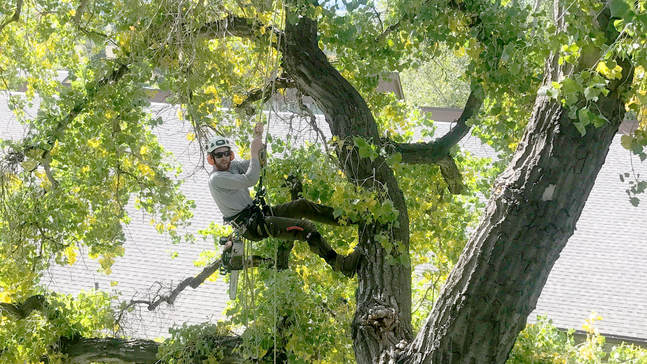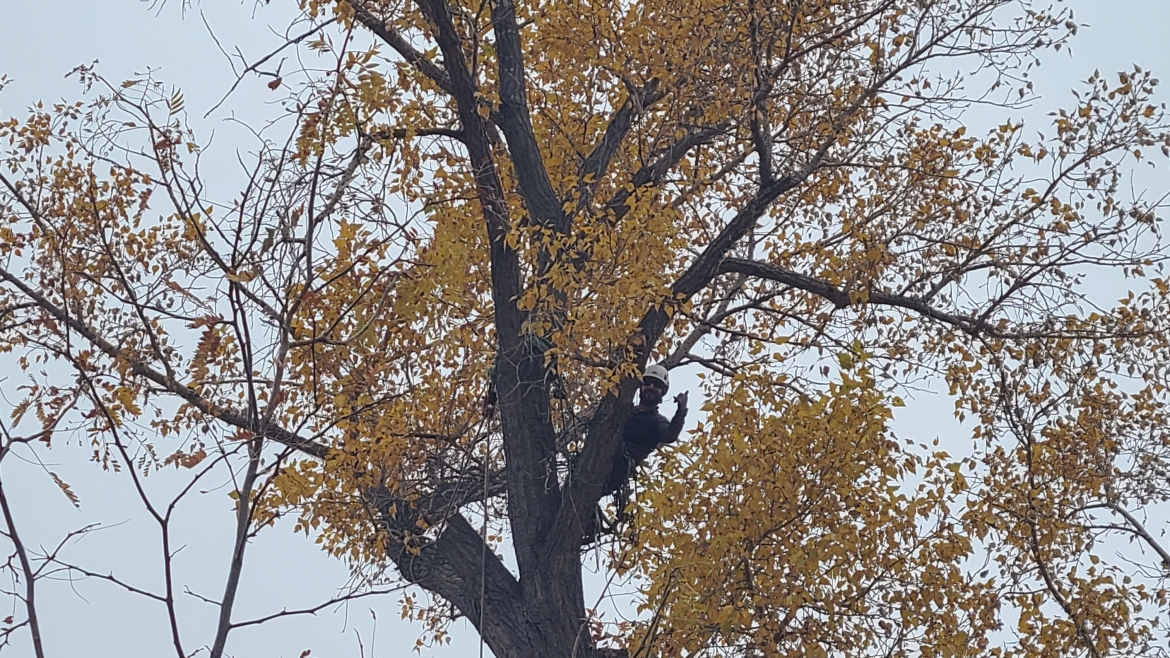Tree pruning is the intersection of science and art. Proper pruning supports tree health, mitigates the potential for storm damage, and adds to the aesthetic beauty of your property. Removing dead, broken, infected, and crossing branches reduces the risk of infection and tree failure. Selective thinning and branch tip reductions mitigate the potential for storm damage by increasing airflow throughout the canopy and the ability for precipitation to pass through the branches, thus reducing wind and snow load on trees. When we are thinning the live canopy of a tree, we take the approach of working from the tips of the branches back towards the trunk. If all of this is done with an artistic eye, pruning can also give trees a more appealing appearance.
We take pride in our attention to detail, balancing aesthetics with tree health. It has been our great pleasure to work with trees as they grow and mature. We are so appreciative of customers who have called us back to prune trees we have cared for in the past. Typically, healthy mature trees need to be pruned every 3-7 years; younger trees and trees that have been neglected may need pruning every 2-3 years until they are healthy and thriving. We are more than happy to provide free tree health consultations.
Serving Colorado’s Front Range
We have multiple climbers with experience with different companies and the quality of pruning we are pursuing is above and beyond every other company. It is higher quality. The fine pruning is more beneficial for the future health of the tree. It mitigates hazards and increases overall health. Tip cuts promote healthier structure. Smaller cuts are less damaging and more gentle. Some of our employees who have worked on the east coast noticed that Boulder seems to have a niche market for this. We have discussed that the deciduous trees here are non native and we need to find a way to support them. Our way of pruning is less drastic and less invasive. –Vit Linhart, Good People Tree Service




